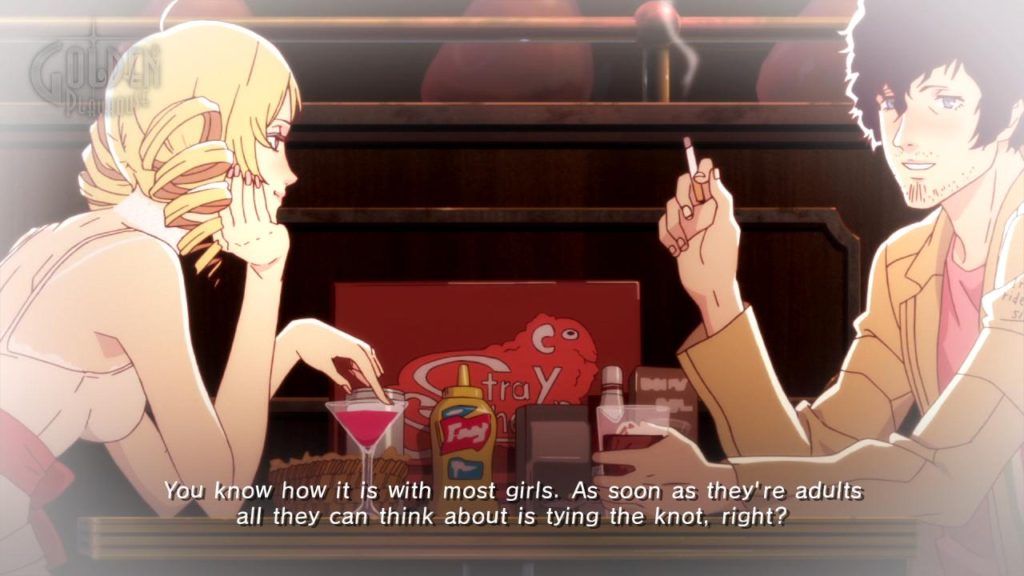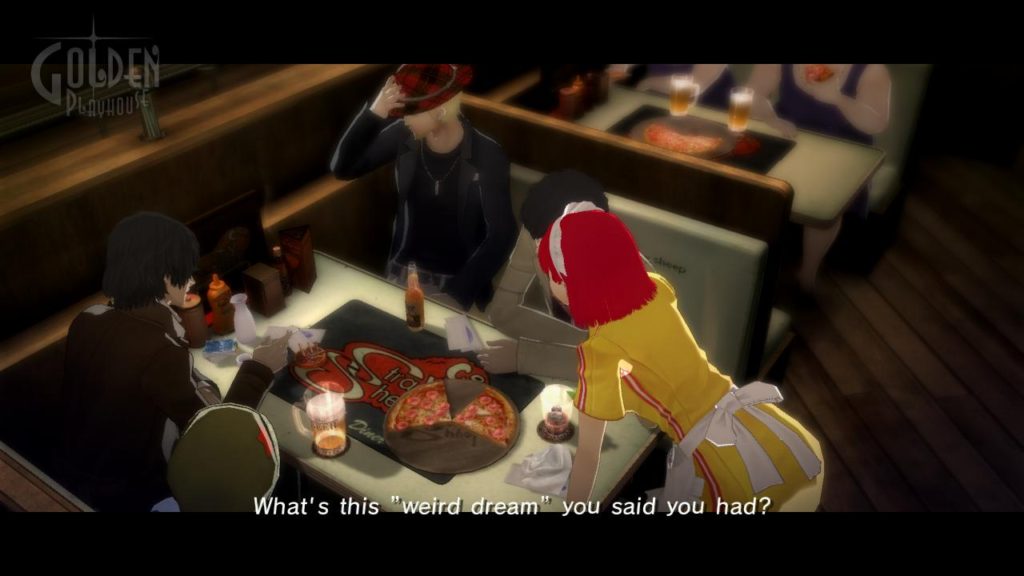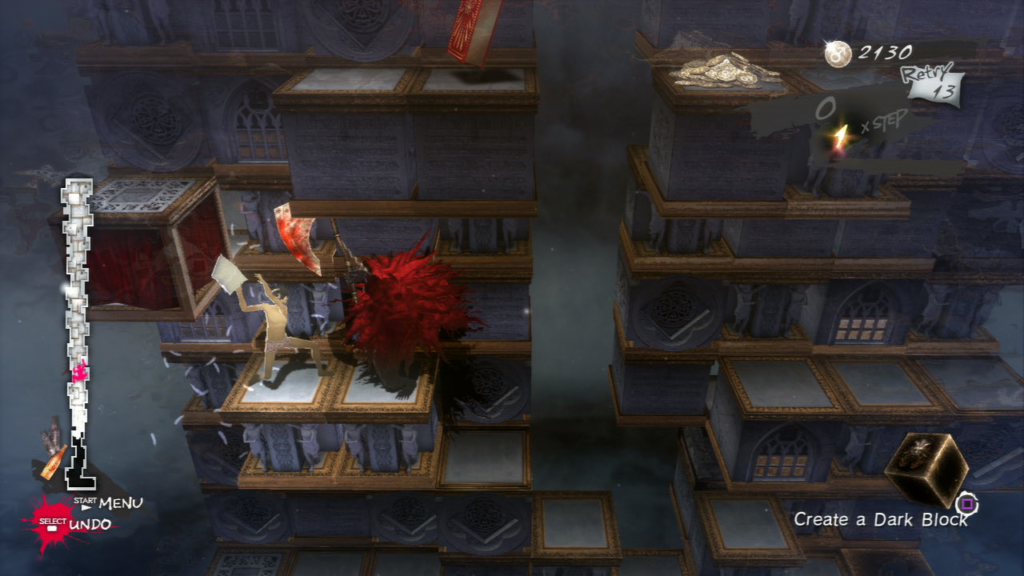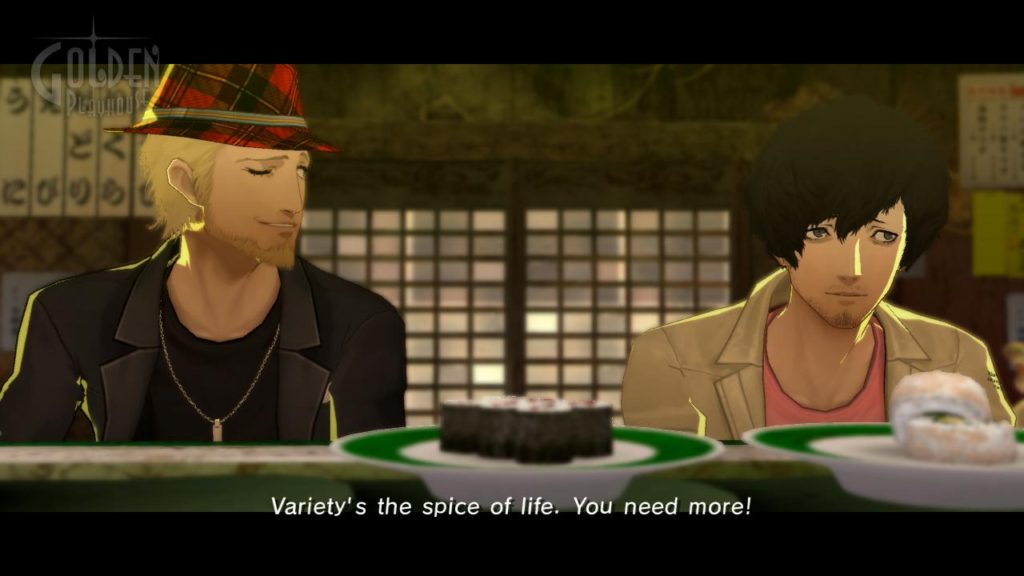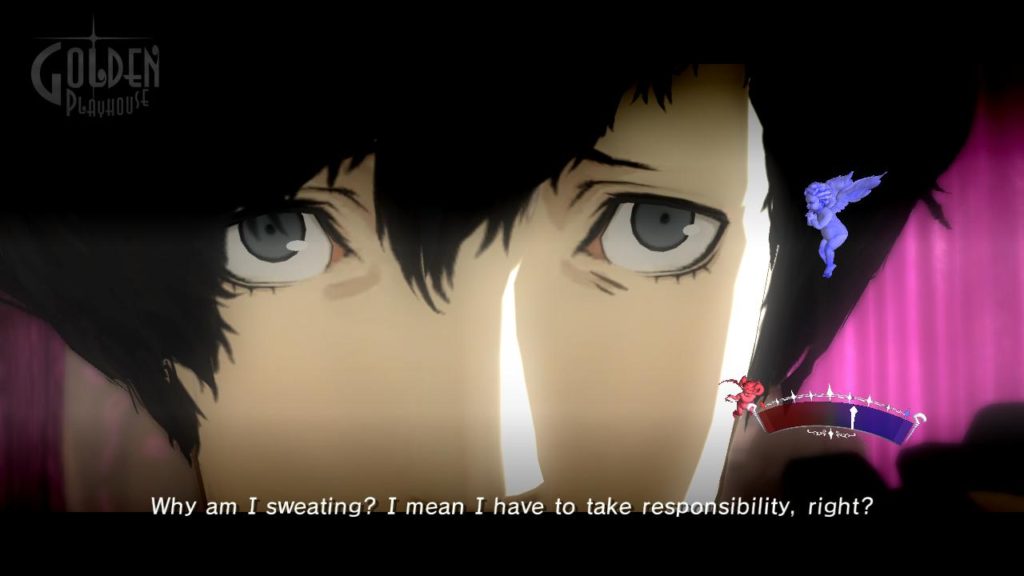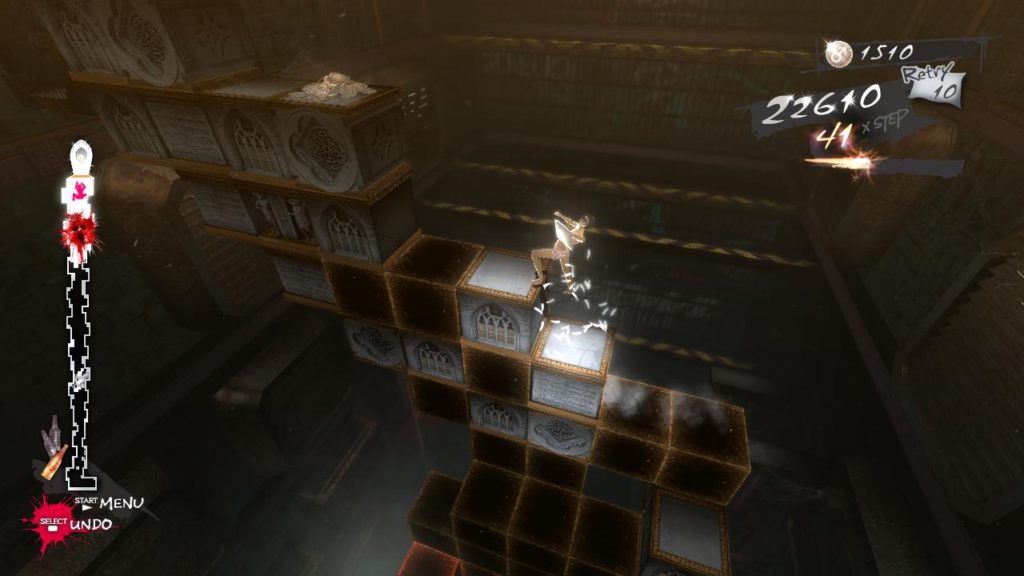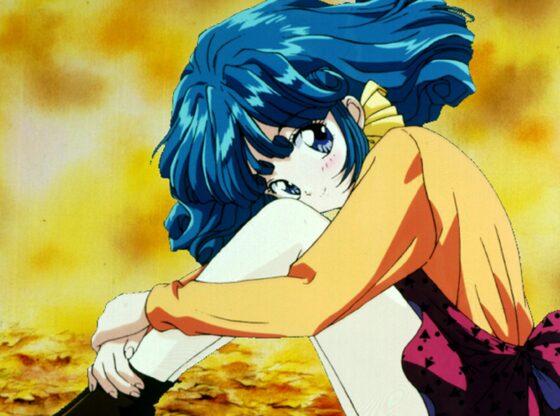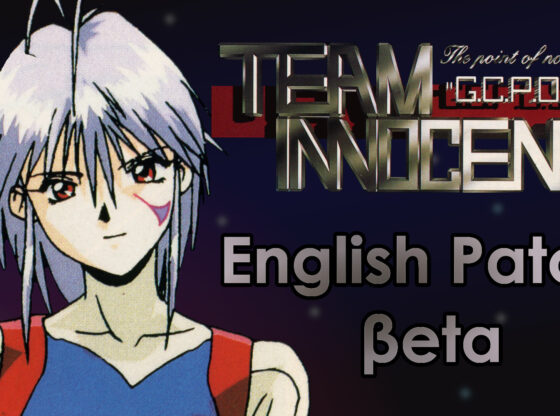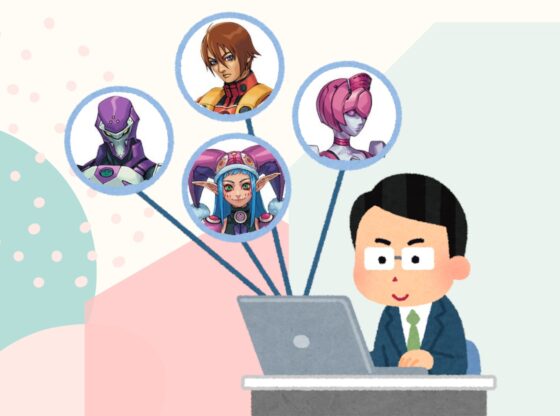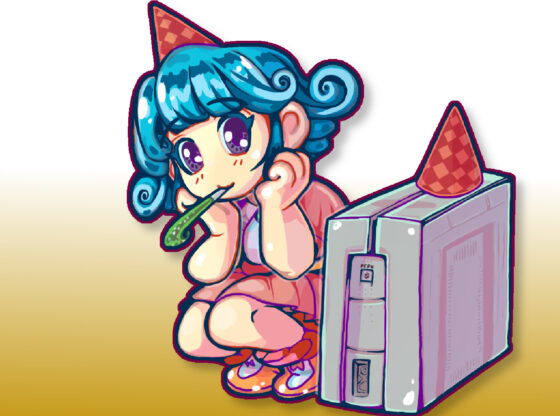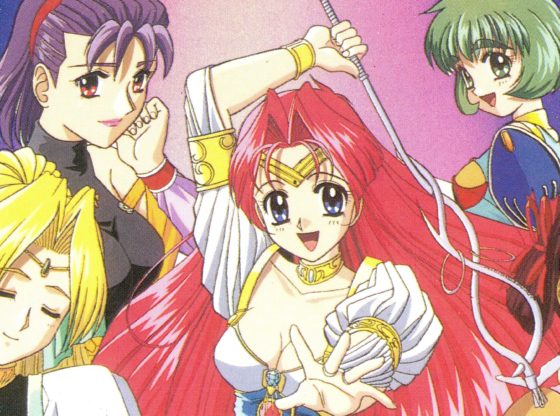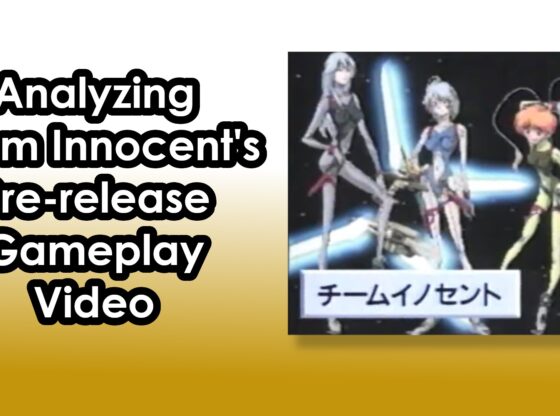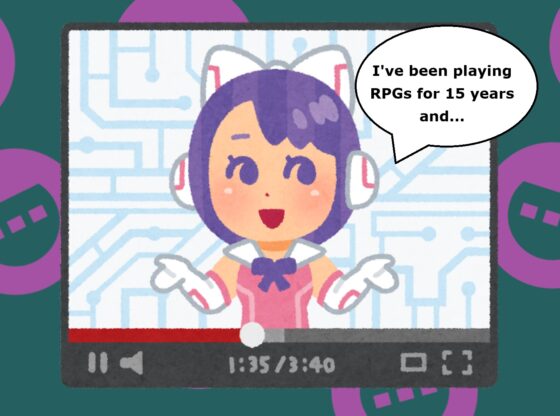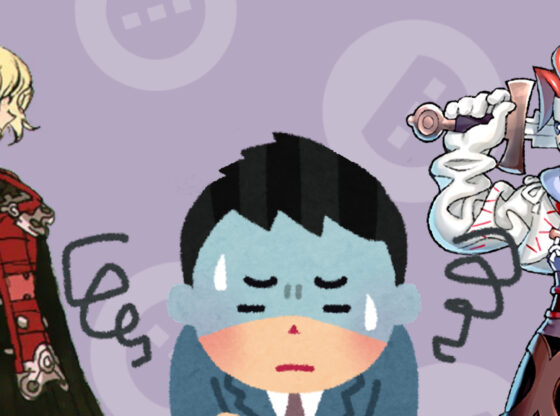If there’s one Japanese game that has been on many radars recently, it is Catherine, an action puzzler from Atlus. Atlus’ first HD title, Catherine is an interesting title since it not only a retail puzzle title but also has an involving story behind a main character who is torn between two relationships.Atlus over the years has remained a heavy force in terms of Japanese content. And up until the PlayStation 2, they’ve been pumping out Shin Megami Tensei titles on the console left and right. But suddenly, when we hit the HD generation, the team fell back almost entirely onto the portable scene. Sure, they’ve been publishing titles for the HD platforms, but none of them have been from their own internal teams. Thankfully, Atlus is finally stepping back into the console ring with their first in-house developed HD title, Catherine.
Story
Romance has played a significant role in gaming throughout the years with Ms. Pacman and Pacman, Princess Peach and Mario, the love triangle in Final Fantasy IV, the Couples mask quest in Majora’s Mask, the list goes on. But while it plays a role in the plot with these titles, romance very rarely become the focus of the plot in traditional games. Catherine throws this formula upside down and instead focuses on the romantic relationships of Vincent Brooks, a 32 year old low salary programmer who just wants to keep living life as he always has, taking one step at a time when only necessary. Most notably, he is troubled about committing to marriage with his five years and running girlfriend, Katherine. While out drinking one night, a mysterious girl named Catherine approaches Vincent. One thing leads to another, partly thanks to alcohol, and the next morning Vincent wakes up to Catherine in his bed.
This, along with plenty of other mishaps, misunderstandings and mistakes, make Vincent’s life a living nightmare… Literally. He starts waking up in the middle of the night in a mysterious tower filled with sheep, traps and giant towers of blocks that he must scale in order to survive the night. There are sheep that are also scaling the tower alongside Vincent, although some of them look fairly familiar as you find out the sheep are actually other people, some of which Vincent is acquainted with. Vincent makes connections with these people when in the nightmare realm, but most of the main plot takes place during daytime segments. It’s similar to how the Persona series has players making connections during the day and then traverse dungeons over night.
Despite Vincent’s Catherine and Katherine dilemma, the story has a heavy focus on Vincent and his friends within the Stray Sheep, the bar that he frequents. They provide support for Vincent, and he can return the favor by supporting them as well. Every night Vincent has the opportunity to speak with other people at the bar. Talking with each character every night slowly reveals more and more back story behind them. The story itself about Catherine and Katherine, honestly moves at an extremely slow pace, but your bar friends keep the story engaging.
Gameplay
Daytime sequences are almost entirely consists of story in Catherine. It’s not until Vincent confronts his nightly nightmares that the player is pushed into action-puzzler sequences. Every in-game night, players are confronted by huge block towers. The player is expected to scale these towers. But since Vincent can only scale one block at a time in normal circumstances, players are expected to push and pull blocks to make staircases and bridges to climb up the tower. It sounds easy at first, but you’ll quickly find that the blocks below you are dropping into a pit of nothingness. If the player takes too long to scale the block tower, or accidentally drops off the edge, it’s game over, or ‘LOVE IS OVER’ as Catherine puts it.
Gameplay has that old arcade feeling of ‘easy to learn, but hard to master.’ Of course, as the nightmares continue, the game will get continually harder. And not just, ‘okay, this is kind of hard’. It’s more like, ‘oh god, where are my eyes’ hard. Even the normal difficulty will challenge the player’s agility and wits. Thankfully, if things get too rough, players can change to an easy mode at almost any time, but they will miss out on earning gold trophies that unlock additional content later on. Atlus makes climbing a little bit easier by recommending techniques throughout the game. Talking to certain sheep will teach you techniques on how to solve tough situations. In some cases, you’ll never be faced by the problem, or you can’t remember the technique so you solve the problem another way. But the more techniques you memorize, the easier it will be to climb. Although, sometimes the technique tip is given a bit too late in the game, as you may have already encountered a situation and then two stages later they finally tell you have to effectively deal with it. Players will eventually come across traps and other climbers that make scaling the block tower even harder. Each nightmare ends with a boss encounter that, for the most part, play out like normal stage sequences minus a few alterations.
The title is extremely easy to control, but it does fall on some camera issues. Very rarely, the player is expected to climb behind the block tower, but the camera doesn’t adjust according to the player’s position. While the player can adjust the camera, it is nearly impossible to get it in a position to effectively maneuver. A similar problem arises when the player is stuck behind multiple blocks, making it impossible for the player to see what situation they are in. Boss battles also have the camera adjusting to better show off a boss and its actions. But when trying to scale the block tower, it becomes more of an annoyance more than anything else. These are all very specific scenarios, so the camera works just fine most of the time.
Multiplayer
If there’s one thing you were buying Catherine for, chances are it wasn’t multiplayer. Right out the gate, I thought it’d be something slapped on just for a bullet point on the box. But apparently, Atlus put a lot more effort into it than just that. After you beat the game, Catherine offers two player local cooperative or competitive multiplayer. Both modes essentially boil down to scaling a block tower, but adding in another player introduces quite a few elements to the title. Co-op forces the players to mindful of the other player’s position. Sure, the player may be able to climb up top using a certain combination of block movements, but it may block the other player from progressing any further. And if one of the players die, it’s game over, so keeping the other alive is ideal. In many instances, having another player just causes more trouble. But the title encourages heavy amounts of communication between the players. And if one player is stuck, having a second mind by your side is helpful for fresh ideas.
Competitive, again, is just block climbing. But this time the goal is to harass your friend as much as possible as you scale the block tower. Players race to the top to win. In a pure race, the most skilled player is most likely going to succeed, but there are other strategies that help balance the playing field. Players can trap each other with strategic block movements. If a player traps another player on a lower plane of field, then the higher player is almost guaranteed to win. And if a player has no knowledge of how to scale the tower at all, they can furiously chase down the other player and attack them by simply knocking them off the edge. So no matter what your playing skill is, there is a formula for success.
Presentation
Atlus is known for having a heavy anime style, but Catherine is our first chance at seeing what they can do in HD. While definitely not replicated entirely, Catherine’s visuals almost perfectly captures the spirit of the anime style. And depending on who you are, that’s either a great or a terrible thing. Either way, it’s hard to deny that the title has some fantastic looking character models. Outside of that though, and the bar, there isn’t really all that much to look at in Catherine, minus blocks. What enemy designs are there are creative and, in many cases, just flat out weird. Each level has backdrops, but you’ll be way too busy staring at blocks to even comprehend what’s going on in the background. Catherine also uses anime cutscenes, but they feel redundant as the in-game engine seems to convey everything just fine.
Catherine has a pretty heavy amount of variety in terms of music, including some more laid back tunes for the bar and everyday life as well as tracks to get the tension going in the nightmares. The title’s voice acting tracks work well, although some bosses are mute worthy, especially after the twenty-fifth retry. Otherwise, there’s an occasional odd-voice, but the title overall sounds like a high-production anime localization. If you do prefer the Japanese track, you’re out of luck with this release as the voice acting is only in English. The title has some heavy audio fluctuations. Anime cutscenes are significantly louder than in-game audio, so keep a remote on hand to bump or lower volume.
Lasting Appeal
Catherine’s story takes about fifteen hours to complete, plus or minus based on the player’s skill level and the difficulty they are playing on. The story mode doesn’t end there though, as there are eight different endings for the player to obtain. Questions and certain conversational branches will occur that the player must answer. How the players respond effects their balance between order and chaos, which ultimately effects the ending. There’s also a hard mode and trophies for players to earn, so the story mode goes a long way. The title’s value is extended even further thanks to the multiplayer, challenge towers that randomize, online leaderboards for challenge towers, and an arcade game called Rapunzel, that throws a twist on the formula by only allows the player to move a certain amount of blocks per stage.
From a concept perspective, gives off a vibe of a downloadable release. But thanks to the extra content and a main story with high-production values, there’s definitely a lot here to be worth the full retail price. But if you only intend on playing the story once through, it may seem a bit short.
Conclusion
Catherine is a really hard game to judge before you get your hands on it. From a distance, it simply looks like moving blocks alongside story sequences that break-up the gameplay, but there’s an extremely deep puzzle game here that can be enjoyed alone and with friends. Aside from some minor technical issues, there really isn’t anything wrong with Catherine. And if there were any concerns on value or play time, Atlus packed the title with quite a bit of extra content and replay incentives to keep the player coming back. For fans of Atlus, Catherine is a must have. For everyone else, unless you just can’t stand the anime style, you won’t be disappointed.
Pros:
- Impressive visual style
- Easy to learn but hard to master gameplay
- Surprising amount of content
- Bromance between bar mates
- Overall compelling story with multiple endings
Cons:
- Camera and control issues in certain situations
- Anime scenes feel disruptive
- Multiplayer content locked for no reason


